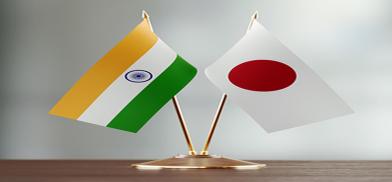Japanese supply chain resilience to decouple from China: Is India the new bet for Japanese investors?
The launching of supply chain resilience in the Indo-Pacific region is another attribute of the rising interest in India. India’s strong leadership in the region evokes new opportunities to reap benefits from its low-cost hub, laden with high IT technology.

In 2020, Japan adopted a policy to strengthen supply chain resilience as an alternative to China by providing subsidies to Japanese investors, either to decouple from China or follow the China+1 strategy. A big subsidy was provided to stimulate Japanese investors to diversify investment from China and invest in other countries. The main aim was to reduce overdependence on China.
Focuses were made on Thailand, Vietnam, Malaysia, Indonesia and the Philippines. Given these, the general impression was that Japanese investment would largely diversify to these nations from China.
India was not among the focused countries for diversification. Therefore, the assumption was that India would be less attractive to Japanese investment and would be behind the focused nations. Paradoxically, reality unveiled a reverse situation of Japanese investment. The growth of the Japanese investment in India was more than in the focused countries. The noticeable feature of the investment was that even though Vietnam hit the headlines as the most focused destination for Japanese investment as an alternative to China, growth was lower than in India.
In 2021 Japanese investment in India increased by 72 per cent, as compared to increases of 58.5 per cent in Vietnam. In Thailand, Indonesia and the Philippines, Japanese investment fell over the same period. This reflects a perceived difference between Japanese government policy and Japanese business interests towards the potential countries for offshore supply chain diversification and avails the subsidy.
India preference
Why has India outweighed the focused nations to attract Japanese investment? There are divergent viewpoints on this trajectory of Japanese investment. Arguments spun over the Japanese upbeat in India, despite it not being a member of RCEP, while all the focused nations were members of the trade block. RCEP is the mega trade block for more dynamic economic exchanges and more integrated development for industrial chains. Historically, the focused nations were the hotbed for Japanese investment after the yen appreciation dampened the Japanese cost of production in the wake of the Plaza agreement in the late eighties. Further, these nations offer more amenable living standards to the Japanese, akin to the Japanese lifestyle. These developed more intertwined Japanese economic ties with Asian industrial emerging countries.
Nevertheless, India refurbished its image as a global investment destination after Apple shifted from China. Arguments were raised that if India can be a hotbed for contract manufacturing for leading US companies such as Apple and Foxconn, why can't it have the potential to be an alternative destination for the Japanese supply chain? The problem lies with Japan's foreign policy and its failure to leverage India’s global political and economic dynamism, despite Japan's strong contributions to the Indian economy through investments in automobiles, Metro Rail, rapid transport systems ( like Bullet trains), and electronics.
Currently, China is the biggest source of the supply chain for Japan. Nearly one-fourth of parts, components and intermediates are imported from China. Nevertheless, Japanese overwhelming investment interests in China are receding, either owing to political loggerheads or economic upheaval due to the COVID pandemic. According to a survey, there were 13, 934 Japanese companies in 2016. It dropped to 13, 685 in 2019. Further, imports of parts and components from China were already on a declining trend. It has declined from 29.5 per cent in 2015 to 26.1 per cent in 2021.
There is a saying that there were few takers of the Japanese supply chain resilience initiative. According to JBIC (Japan Bank for International Cooperation), most of the Japanese investors surveyed lamented that there were inadequate Japanese clusters in the focused nations. Besides, the fast recovery of Chinese growth as compared to focused nations evoked second thoughts for diversification.
Indo Pacific in focus
Given these, a new window has opened for India to reap the benefits. JBIC survey unveiled the roadmap. In an annual survey, India was voted one of the most promising business destinations for Japanese investors in the medium term. Even for the longer period, say 10 years, the respondents were upbeat to do business in India.
The reasons cited were better growth in the economy and large local market, low labour costs supply chain base assemblies and low-cost components and raw materials. In addition, a sharp bounce back in the economy with the fastest growth recovery impressed Japanese investors. The GDP of India is expected to notch 8 per cent growth in 2022-23, as compared to 5.5 per cent growth in China.
The launching of supply chain resilience in the Indo-Pacific region is another attribute of the rising interest in India. India’s strong leadership in the region evokes new opportunities to reap benefits from its low-cost hub, laden with high IT technology. The launching of IPEF (Indo-Pacific Economic Framework) threw a challenge to Vietnam, Thailand, Malaysia and the Philippines after India withdrew from RCEP. Eventually, the Japanese government supported the initiative by granting financial support to six Indian projects under the Programme for Supply Chain Resilience in Indo-Pacific Region.
This will ensure assemblers repose dependence on India for low-cost supply chains which will offer sustainability. Therefore, India has emerged as a new bet for Japanese investors against the focused nations for China's +1 strategy.
(The writer is a former Adviser, Japan External Trade Organization, New Delhi. Views are personal.)










Post a Comment